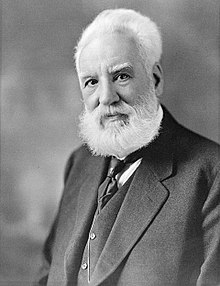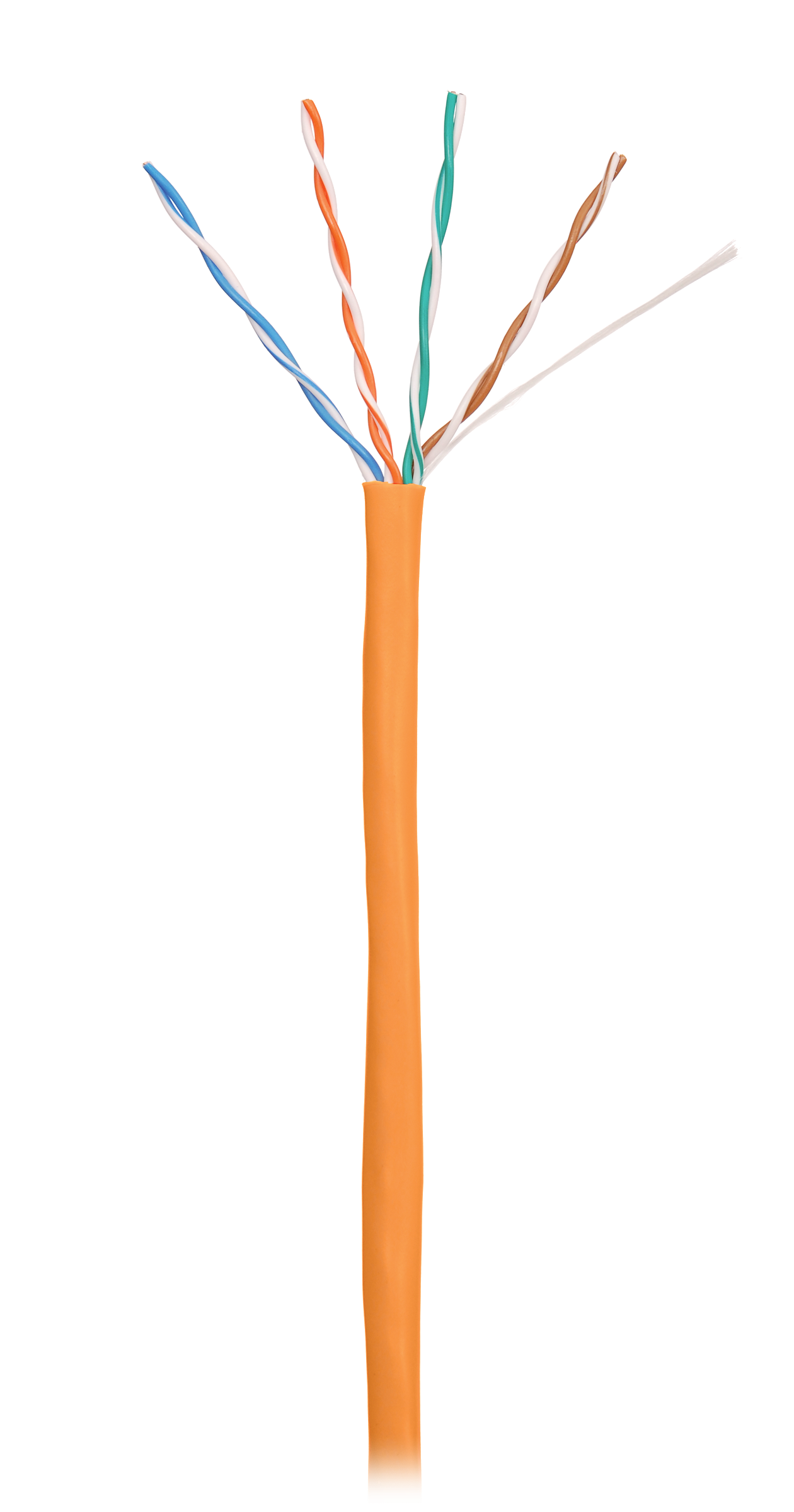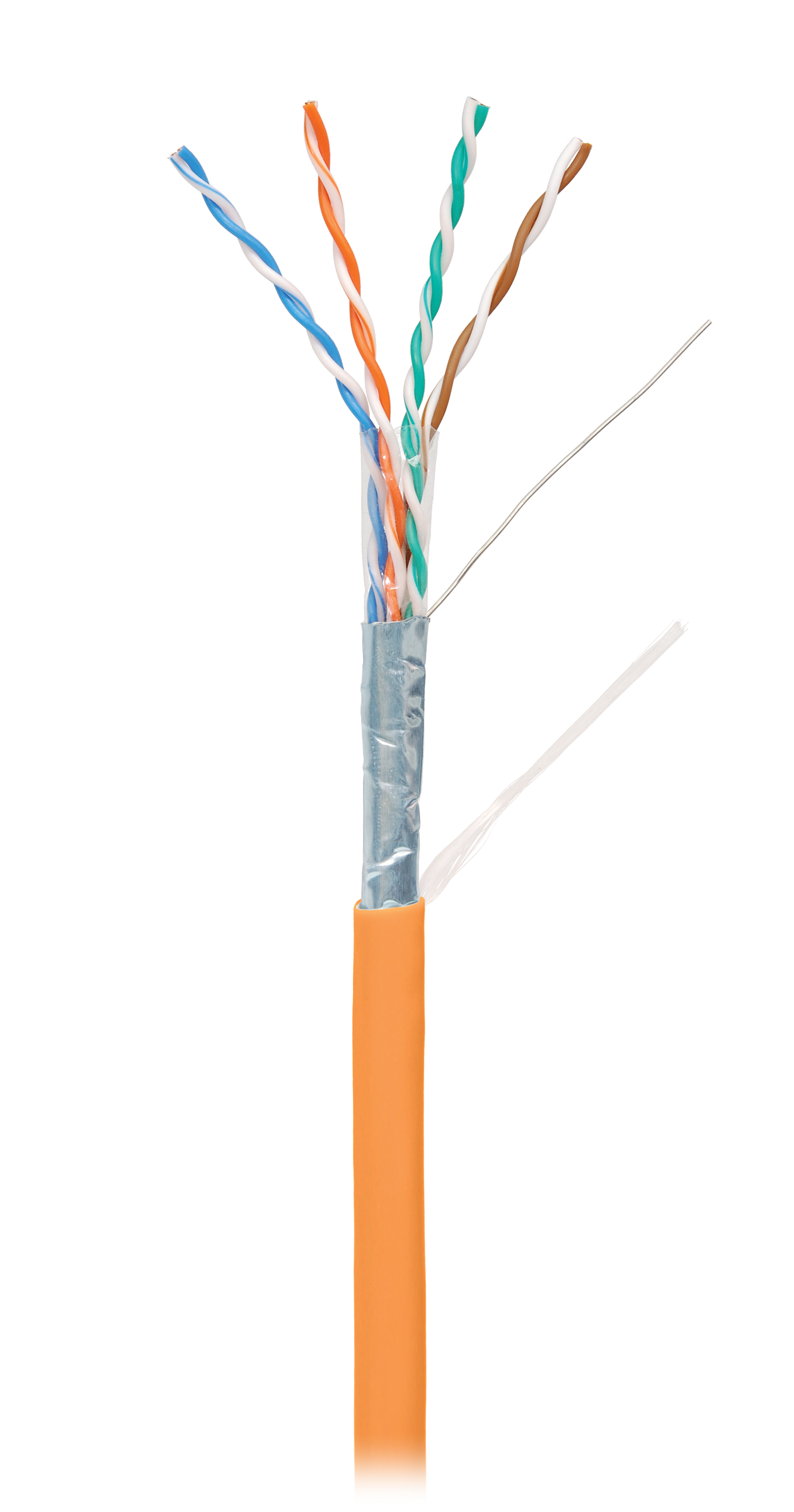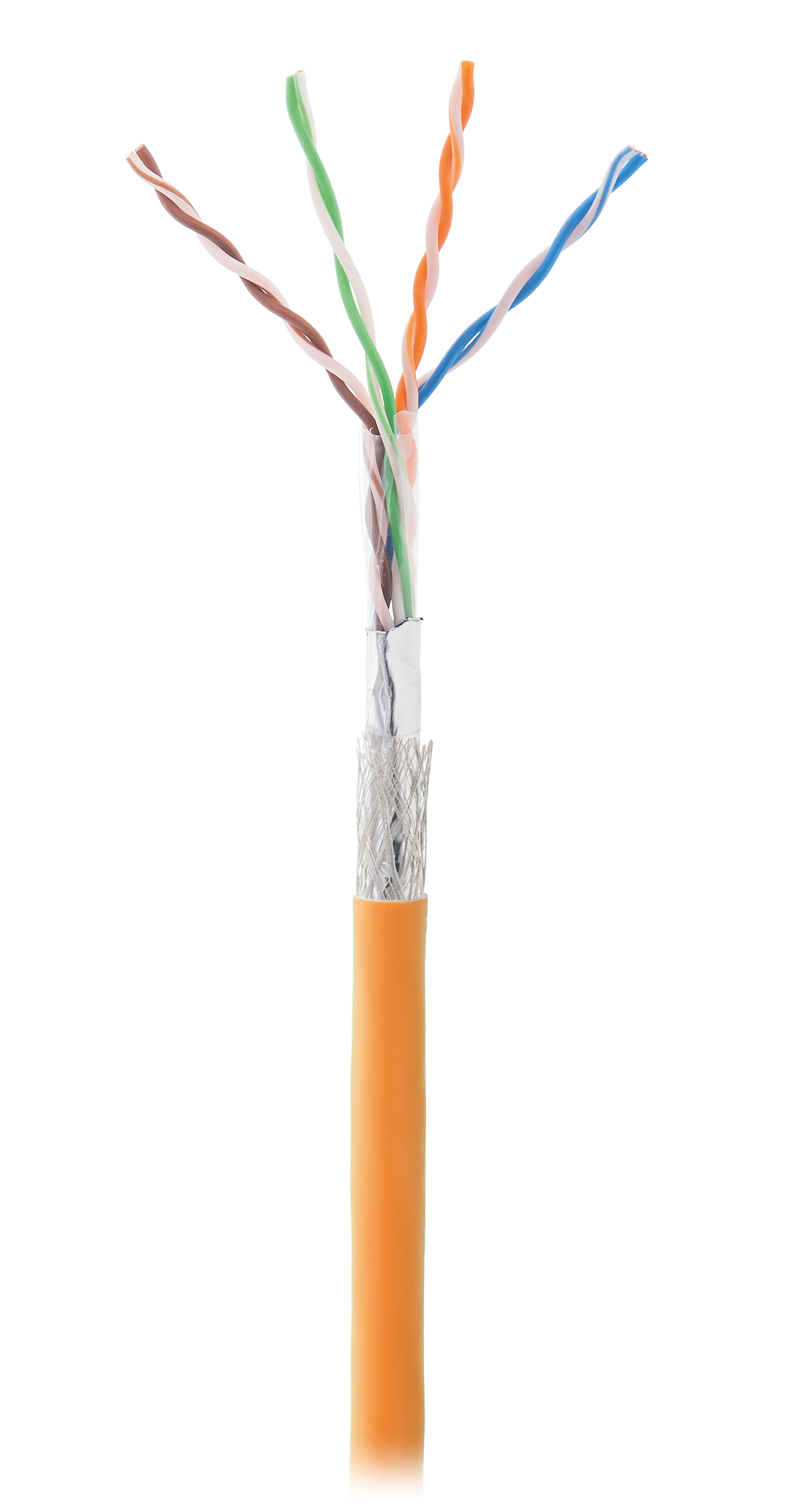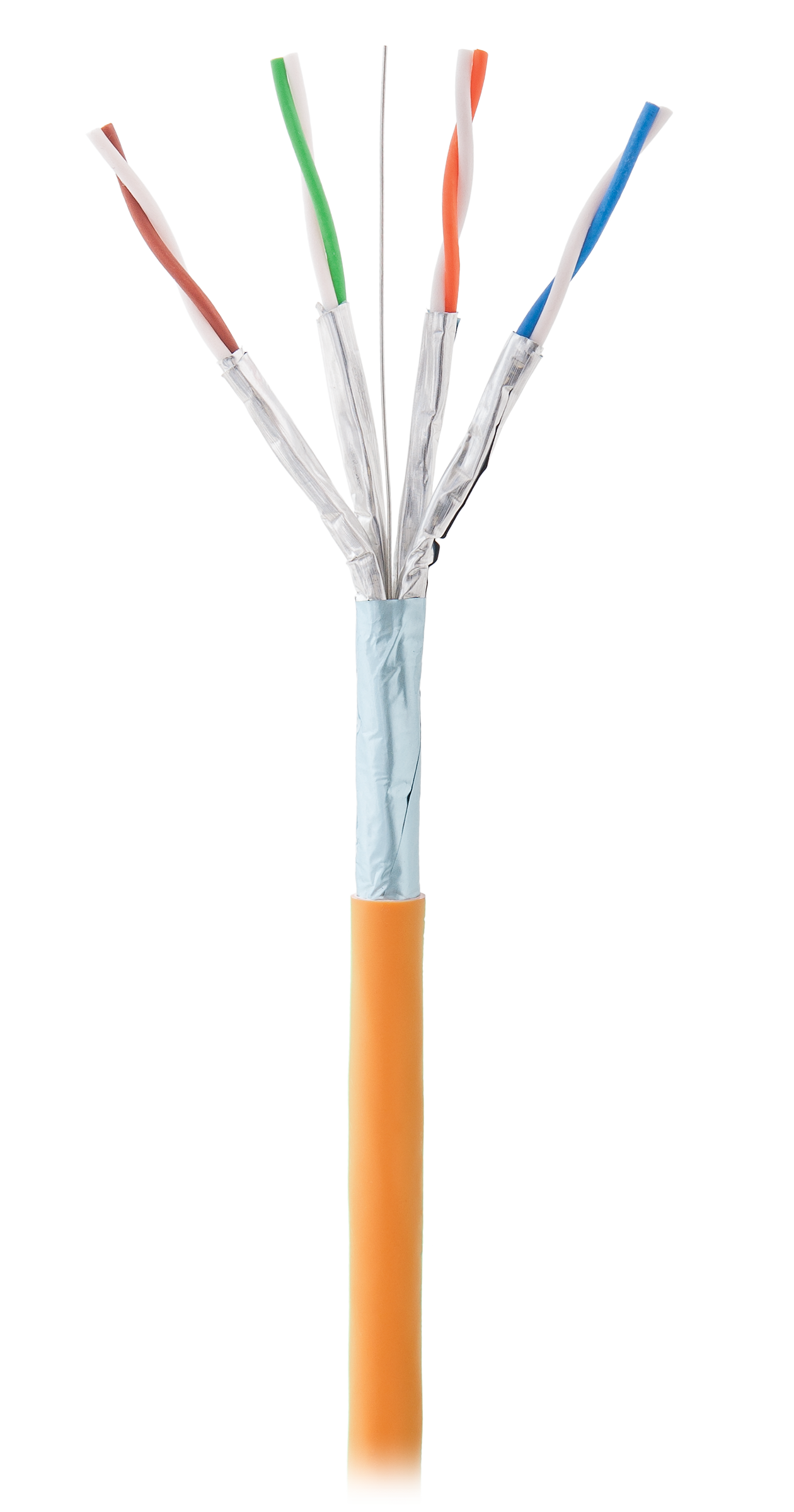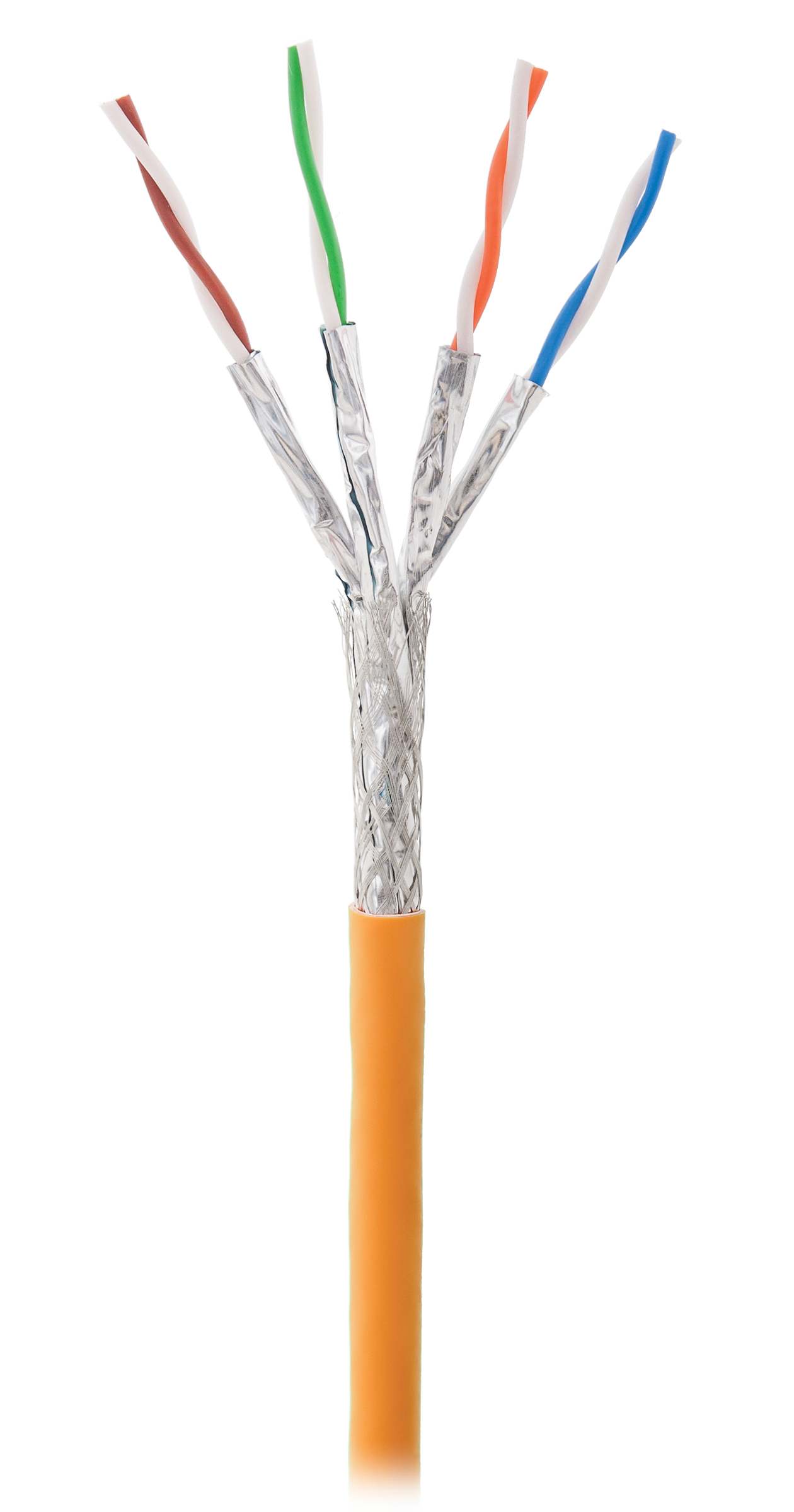Classification for twisted pair cable
Article 3 April 2019
What do you need to know to choose the right type of networking cable
Nowadays the basic transmission media in Structured Cabling Systems (SCS) is the twisted pair cable with the conductors made of bare copper. This type of cable is recognized for its wide range of constructions, relatively low price and simplicity of installation. There’s special cable classification, which facilitates correct choice of cable and cabling works. Besides, this classification can also explain us what stages of development cable went through to become that very cable which is used today in every network.
A little historical journey
In 1876 Alexander Graham Bell , a Scottish-born inventor from USA, patented the way and device for transmitting voice and other sounds over telegraph with the use of electric waves. Today we call it telephone. Needless to say, that this device is widespread among all sectors of society and it’s really hard to imagine our lives without it.
Initially the telephone lines were subjected to strong interference due to electromagnetic field emitted by tram lines. It resulted in that the experts started developing the ways of protection of high-voltage networks. The first step in this challenge was the wire transposition. This principle is based on the exchange of wires position once every several poles. This represented an early implementation of twisting, which resulted in positive outcome.
In the United States alone, there was installed about 1.5 million of telephones. As the result, it was necessary to lay a huge amount of cable as well as to improve its construction (the telephone connection was not of high quality). In 1881, Alexander Bell invented “twisted pair”, the cable, which was initially intended for telephone networks. Such cable was made of one or more pairs of insulated conductors twisted together. The pair (or pairs) were covered with general outer jacket in order to protect the wires from physical and nature impacts.
In the course of development of wirelines telecommunications, the twisted pair cable also evolved and today it is an integral part of SCS.
What is twisted pair cable?
Before talking about twisted pair classification, it’s worth figuring out what constitutes a twisted pair cable.
Twisted pair is the cable, which consists of one or several pairs of copper conductors insulated by dielectric polymeric compound and twisted together. Twisted conductors have constant twist rate. At least for cables containing small numbers of pairs the twist rates must differ in order to conceal the crosstalk between pairs. In other words different twist rate for each pair is used for minimizing the negative impact between pairs.
Twisted pair: basic elements
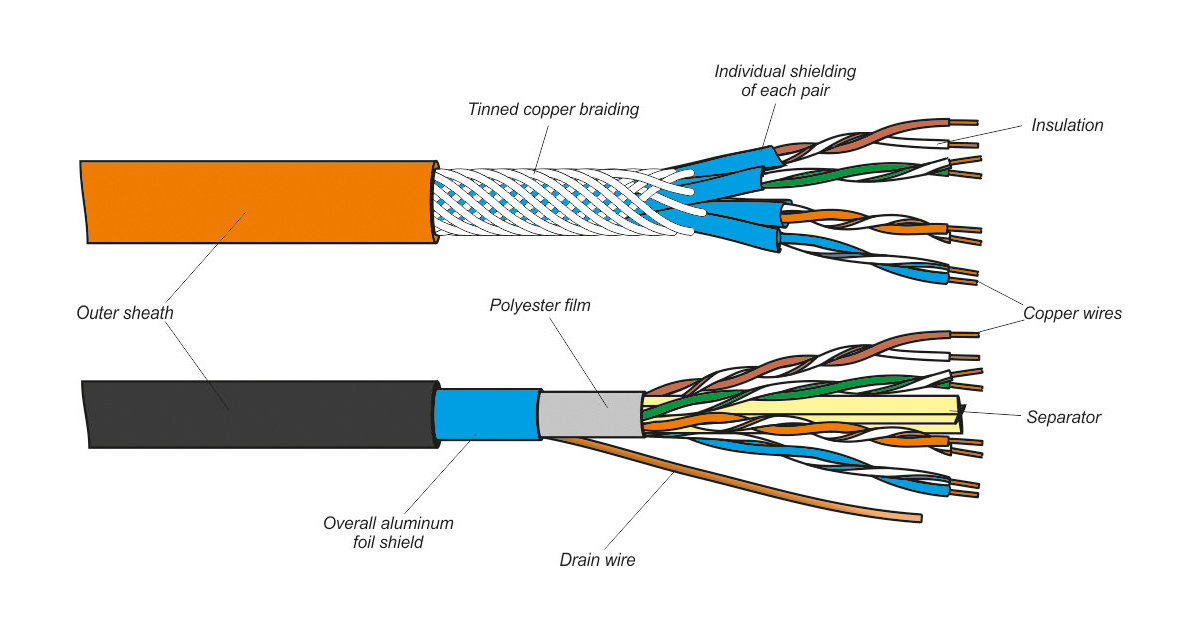
Currently, there are numerous cable constructions that combine basic elements of one kind or another. It’s worth mentioning that not the all elements mentioned below are obligatory for twisted pair cable. For instance, drain wire or shielding are not included in each construction of twisted pair but necessary for shielded cables only (F/UTP, F/FTP, etc.)
Solid conductor is usually used in permanent lines and backbone cabling with the use of IDC (insulation displacement connector). This stems from the fact that solid conductor doesn’t suit for regular flexes and bends. But it’s worth mentioning that such cable offers better transmission performance over long distance in comparison with stranded conductor. In addition, single, thick strands of cable, are quite resistant to threats and very easy to produce.
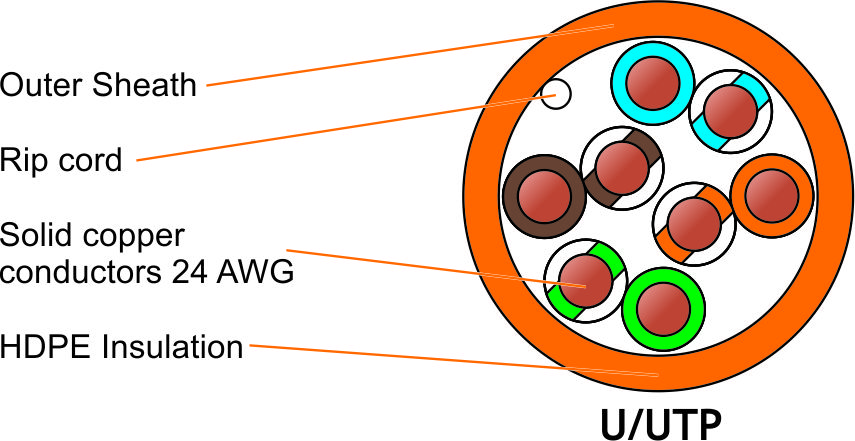
Stranded conductor are made of several smaller wires woven together. Stranded cables are resistant to regular physical impacts, such as bends kinks. But in contrast to solid cable, stranded cable has higher attenuation (signal reduction), that’s why the maximal link distance is limited. Stranded wires are most often used in patch cord production. Patch cords usually interconnect active equipment and patch panels or telecommunications outlet and workstation.
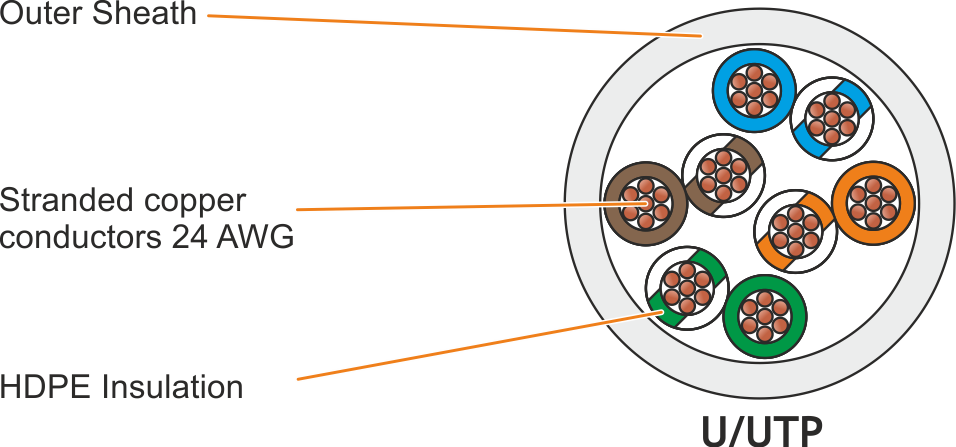
The most commonly used material of outer sheath for indoor cabling is LSZH (Low Smoke Zero Halogen) and PVC (Polyvinyl chloride). LSZH material does not sustain combustion and does not emit harmful halogens, it perfectly suits for laying in bundles and indoor crowded areas. PVC is basically used for single cable installation inside buildings and facilities.
PE (polyethylene) outer sheath is used for outdoor cabling. It resulted from the fact that PE material has excellent UV, cold and environmental resistance. But, on the other hand, this material sustains combustion even in single cable installation, that’s why it’s strictly prohibited to lay cable with PE jacket inside buildings and facilities.
One should not forget also that there are jackets of special purpose such as flame resistant jackets (FR – PVC, FR – LSZH), which remain functional during fire, and universal jackets (UV – LSZH, UV - PVC), which can be used both indoors and outdoors.
The constructions of twisted pair cable
As it was previously mentioned, the basic division of twisted pair cable is shielded and unshielded solutions. Shielded solution, in its turn, has also several types.
In accordance with international ISO/IEC 11801 Standard one should use special code letter to designate one or another type of cable. It looks the following way:
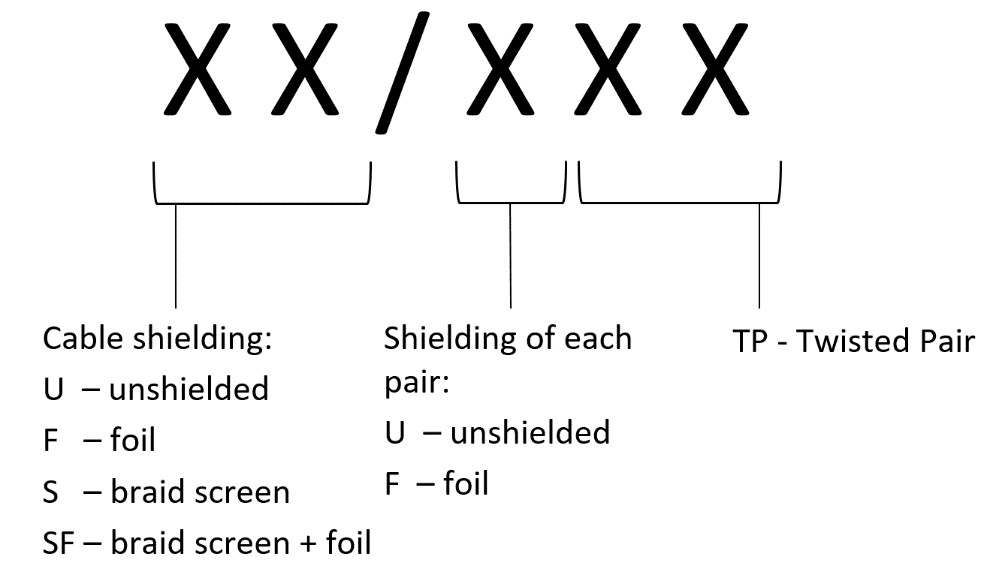
Now let’s talk about each type more thoroughly:
Classes and categories of twisted pair cable
Maximum bandwidth is the basic characteristic, which divides twisted pair cable on Categories/Classes. Today there are two main standards, which stipulate the division of twisted pair Categories/Classes, these are International ISO 11801 Standard and American TIA-EIA-568B Standard.
According to ISO 11801 there are the following Classes: Class A, Class B, Class C, Class D, Class E, Class EA, Class F and Class FA. The higher Class, the better transmission rate. It’s also worth mentioning that the cable of higher Class supports the performance of lower Class but not vice versa.
There’s no such term as “Class” in the American TIA-EIA-568B Standard, instead of that Category is used for the division of twisted pair cable. American Standard uses the following letter code: “Cat.X”, where X is the digit from 1 to 8.
Some of the Categories/Classes are outdated and not widely used anymore. So we’ll consider only up-to-date twisted pair Categories/Classes more thoroughly:
Class I (max. bandwidth 2000 MHz)
Class II (max. bandwidth 2000 MHz)
| Cat.3
Class C (max. bandwidth 16 MHz) |
Is unshielded cable used for telephone and data transmission with 10BASE-T. Data rate is 10 Mbit/s, but with the use of supported 100BASE-T4 application, the rate can be up to 100 Mbit/s over four pairs. Currently Cat.3 cables mostly used for telephone lines |
| Cat.5
(max. bandwidth 100 MHz) |
Is unshielded cable used for local networks with 100BASE-TX and 100BASE-T applications. Maximum data rate is up to 100 Mbit/s with the use of two-pair cable. This Category is applied in backbone cabling and telephone lines |
| Cat.5e
Class D (max. bandwidth 100 MHz) |
Is both shielded and unshielded cable. Cat.5e is an enhanced specification of Cat.5. Data rate is up to 1000 Mbit/s with 1000BASE-T application. Unlike the previous cables this Category requires only four-pair construction. Currently it is the most popular Category in most of the countries, widely used for local networks and video surveillance |
| Cat.6
Class E (max. bandwidth 250 MHz) |
Is applied in Fast Ethernet and 10 Gigabit Ethernet applications. Maximum data rate is up to 10 Gbit/s with obligatory testing requirement for unshielded cables and distances over 55 m |
| Cat. 6A
Class Ea (max. bandwidth 500 MHz) |
Is applied in 10 Gigabit Ethernet with max. data rate of 10 Gbit/s with the distance of 100 m |
| Cat.7
Class F (max. bandwidth 600 MHz) |
Is used for 10 Gigabit Ethernet application with max. data rate of 10 Gbit/s. Also supports transmission with POTS/CATV/1000BASE-TS applications in one time over a single cable. Such cable represents only F/FTP and S/FTP constructions. Category 7 is not recognized in TIA/EIA |
| Cat. 7A
Class Fa (max. bandwidth 1000 MHz) |
Is used for 10 Gigabit Ethernet. Also supports transmission with POTS/CATV/1000BASE-TS applications in one time over a single cable. 40 Gigabit Ethernet with max. data rate up to 40 Gbit/s may be possible with the distance up to 50 m but not specified by standard. Category 7A is not recognized in TIA/EIA. Requires TERA or GG45 connectors |
| Cat.8.1 | Minimum cable design U/FTP or F/UTP, fully backward compatible and interoperable with Class EA (Category 6A) using 8P8C connectors |
| Cat.8.2 | F/FTP or S/FTP minimum, interoperable with Class FA (Category 7A) using TERA or GG45 connectors |
Both Category 8 cables designed for data centers with short distances between switches and servers and they are not intended for general cabling. Data rate is up to 40 Gbit/s with 40GBASE-T application over 30-36 meter lengths.
In conclusion we’d like to add, that twisted pair cable will be relevant and demanded for a considerable time despite the fact that data transmission technology is rapidly evolving day by day and setting more and more strict requirements to cable links. Over the past few years, the performance of twisted pair cable increased several times. Today the industry is already in the process of twisted pair cable development, which would be capable to transmit data at the rate of 100 Gbit/s.
